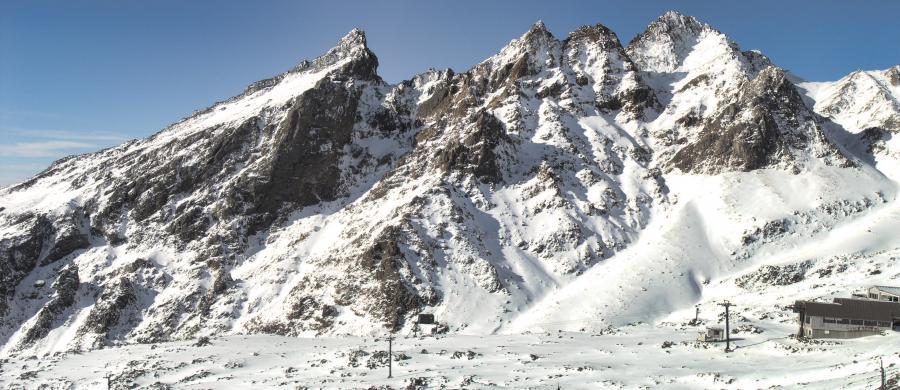Arriving at the Top o’ the Bruce, all climbers’ eyes will immediately be drawn to the sharp outlines of Pinnacle Ridge, marching down the mountain along the eastern edge of Whakapapa skifield. There are three main pinnacles: from north to south they are Great Pinnacle, Second Pinnacle and First Pinnacle. Some of the best climbs on the mountain are right here.
Accessibility, though, does not mean the Pinnacles do not need to be taken seriously. The peaks are over 2000 metres high and exposed to ferocious weather; the gullies can harbour extreme avalanche risks, especially after winter storms.
Geologically the oldest part of the mountain, this spectacularly sharp ridge belies the reality of Ruapehu’s volcanic origins. The ridge has long been a favoured destination for alpine climbers visiting Ruapehu, Much of the terrain is best described as mixed. The rock is generally sound – certainly better than it appears at first glance – although protection can be hard to find. A selection of slings will be useful. There are a number of ice routes on the Pinnacles, although being at a relatively low altitude they do not come into condition every year.
Nga Tohu Pinnacle Ridge
Type
Part of
Lat/lon
-39.25186302,175.57105064, NZ Topo Map
Topo50
BJ34 219 521
Comments
UUID
38b4f62c-c165-48f9-b0ff-1dc0e640a389
